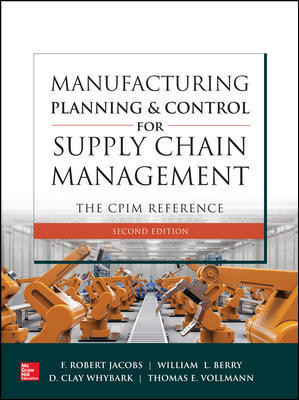“The true measure of a successful NDT training program lies in the student’s ability to demonstrate that the body of knowledge was thoroughly comprehended and that the skills to effectively perform the nondestructive tests have been achieved. This should be the goal of all NDT courses.”
I. NDT Training – In the Beginning
In the early 1950s, there were not many training courses offered or other educational opportunities for those who were involved with or considering a career in nondestructive testing. Several companies offered courses that were primarily focused on the use of specific equipment they manufactured with some theory and principles thrown in. These early attempts at NDT training were well before the advent of qualification programs such as SNT-TC-1A and NAS-410.
In addition to these industry courses, some of the local ASNT sections attempted to fill the need for NDT training through short courses. Most were conducted in cooperation with local technical schools and colleges but these early efforts left much to be desired. There were no recommended course outlines, the books and publications to supplement these courses were limited, and the instructors were usually volunteers from the local ASNT section’s membership. Most did not include “hands-on” or practical lab sessions.
In June 1959, the first NDT Handbook, a two-volume, in-depth reference set that covered all of the major methods was published. The editor, Dr. Robert C. McMaster, also a professor at Ohio State University, was often referred to and ultimately became known as the “Grandfather of NDT.” In fact, OSU started offering a two-week summer short course using early draft copies of the Handbook. At the time, this program was highly rated with good attendance—primarily since the instructor was Dr. McMaster himself!
Later, several vocational/technical schools initiated two-year programs and short courses. One of the more successful programs was at the Hutchinson VoTech Institute in Hutchinson, MN (now Ridgewater College). Today this program is considered to be one of the best. Many of the “Hutch” graduates have moved on to successful careers and have made huge contributions to the NDT industry. There were other limited programs offered by Temple University, Norwich State Technical College (now Three Rivers College), Don Bosco Technical Institute, etc.
Companies, again mainly manufacturers of NDT equipment, began offering courses, generally with emphasis on the methods utilizing their equipment. Of course it is now essential that the training should be focused on the body of knowledge in addition to the equipment operation.
Small independent industrial schools, usually locally operated, were also founded to fill the growing need for trained NDT personnel.
II. Training Requirements/Recommendations
A summary of references to NDT training found in SNT-TC-1A, ANSI/ASNT CP-189 and NAS-410 follows:
a. SNT-TC-1A (Recommended Practice) states that “personnel who are candidates for initial certification shall complete organized training programs. Such training may be by instructor-led classroom programs, self-study, virtual instructor-led training, computer-based, or web-based training. When training is done by computer-based or web-based training, hours and content will be tracked and student examinations will be administered. All such training programs shall be approved and periodically monitored by the Level III.”
b. ANSI/ASNT CP-189 (National Standard) requires that candidates for certification as Level I or Level II complete sufficient organized training to become familiar with the principles of the method and the practices of the applicable test technique. It further requires that this training be conducted in accordance with a course outline approved by the Level III. It also states that the course include the topics contained in ANSI/ASNT CP-105 (the body of knowledge) for the appropriate NDT method, plus any additional topics as deemed necessary by the Level III. The sequence, content, amount of time spent, and depth of coverage for each topic must be approved by the Level III and include sufficient examinations to demonstrate that the necessary information has been comprehended. The training requirements for Level III personnel are simply satisfied by the possession of a current ASNT Level III certificate in the specific method.
c. NAS-410 (National Aerospace Standard) was formerly known as Mil-Std-410E, and requires that all NDT training programs be conducted by an individual who is a qualified NDT Instructor and include the basic principles and theory of the specific NDT method. The program must also include practical training so the student can develop the practical skills necessary to carry out the responsibilities of the applicable level of certification. In addition, the training program also must include sufficient examinations to assure that the necessary information has been comprehended. NAS 410 further requires that the training be conducted in accordance with a detailed course outline approved by the Level III and include as a minimum the following subjects:
- Basic theory
- Test principles, including choice of NDT methods, relevance to different materials and part and test variables
- Product forms and materials; defect formation and characterization
- Equipment operation and standardization
- The importance of process controls
- The importance of appropriate processing steps and parameters
- Safety
- Applicable techniques and the advantages and disadvantages of each
- Limitations and capabilities of each method and technique
- Applicable specifications, codes, operating procedures and work instructions
- If applicable, evaluation, interpretation and documentation of inspection results.
III. Current Training Offerings and Concerns
There are numerous and varied NDT training programs offered today. Space limitations do not permit them all to be included here, but a good source of the many training organizations and their curriculum is Material Evaluation’s Reddi-Reference Guide published annually by ASNT.
Along with the growth in the number of NDT schools, there are a number of major problems/concerns. These include the lack of consistency between the programs offered, qualifications of the instructors, and the content and overall effectiveness of the courses. One approach to addressing these concerns is to adopt an accreditation process through a comprehensive review or audit of the training organizations and the instructors following the recommended guidelines described below in Section IV.
IV. Guidelines to Consider When Selecting a Training Organization
When considering the selection of a quality training provider, some of the factors that should be considered are offered below. In fact, it is recommended that a checklist be developed, completed, and maintained in the QA file for possible future audits. These factors can apply to both in-house training provided by employer trainers as well as from outside training sources.
1. Does the training organization have a quality program?
2. Does this quality program include, as a minimum, the following:
a. Training instructor duties and responsibilities?
b. Training requirements?
c. Quizzes, homework assignment and end of course examination requirements?
d. Student records of attendance and course completion (dates, grades, participation)?
3. Are the instructors and training staff personnel aware of the quality program?
4. Are the instructors qualified and certified in the methods being taught and are they documented? (Note: The possession of a Level III certification does not always guarantee the instructor is a qualified teacher in a given method).
5. Does management conduct periodic audits of the overall training system (at least once a year)?
6. Are the classrooms suitably arranged with good lighting and equipment?
7. Are the presentation materials, quizzes/examinations, and visual aids periodically reviewed and updated to keep current with the technology?
8. Is there a procedure describing the minimum requirements for the effective operation of the training organization? (And is it being followed?)
9. Are course lesson plans and course outlines available?
10. Are they approved by the Level III?
11. Do the course outlines include, as a minimum, the recommended training subjects as specified in the “body of knowledge” or the applicable training requirements?
12. If the organization is also approved as an Outside Agency, is there a clear and distinct separation between the training and the administration of examinations to be used for certification? (Note: It is essential that the end of course examinations be different from those used for certification.)
13. And if so, are the test specimens used for the “hands-on” lab sessions in the training courses different from those used for the practical examinations to be used for certification?
14. Is the course content of the right level for the course subject and NDT Level? (For example: Are the Level II courses of a higher technical level than Level I?)
15. Are the course quizzes and end of course examinations consistent with, and do they cover the applicable body of knowledge?
16. Does the training program include the total number of hours as required by NAS-410, CP-189, or recommended by SNT-TC-1A?
17. Do the students attending the training course receive:
a. Manuals that are relevant to the course and that are legible?
b. Handout materials (legible tables, graphs, equations, reference materials/books etc.)?
c. Lab/”hands-on” directions and exercises?
18. Are student records maintained for the required time and do they include:
a. Name, employer, subject/level, and record of attendance?
b. Grades of quizzes and final course examination?
c. Copy of the course certificate, if given?
19. Does the facility have adequate audio-visual equipment and high-quality Power Point presentation programs?
20. Does the laboratory used for “hands-on” training have adequate equipment to support the number of students being trained?
21. Is the equipment current and functional with the essential accessories?
22. Does the applicable equipment have current calibration stickers?
23. Are the test specimens and calibration standards representative of current ones to be encountered “on-the-job”? And are they cataloged and controlled?
24. Are latest versions of applicable codes, standards and specifications available for use by the students?
25. Is there a process to verify the qualifications of a contracted instructor if one is used?
V. The Need for Training School Accreditation
Back in the 1970s, ASNT considered initiating a program for the “accreditation” of organizations offering NDT training courses. It was a novel idea but never progressed beyond agonizingly long discussions and debates within the committee. With the advent of so many organizations claiming to offer NDT courses, it is incumbent on the NDT community to once again consider accreditation. NDT training is an essential foundation of personnel qualification and, for far too many years, there have been training organizations offering substandard courses.
Some of the problems that exist today include, but are not limited to the following:
1. Widespread inconsistencies between trainers. There are virtually no valid rules or requirements that address the qualifications of NDT instructors. SNT-TC-1A simply states that “all NDT training programs shall be conducted by a qualified instructor……” NAS 410 requires that instructors “have the skills and knowledge to plan, organize, and present classroom training and practical exercises in accordance with approved course outlines.” ANSI/ASNT CP-189 requires that an NDT instructor must meet at least one of the following:
a. Possess a current ASNT Level III certificate in the NDT method to be taught.
b. Have academic credentials at least equivalent to a B.S. in engineering, physical science, or technology, and possess adequate knowledge in the NDT method to be taught.
c. Be a graduate of a two-year school of science, engineering, or NDT and have five or more years of experience as a Level II, or equivalent, in the NDT method to be taught.
d. Have ten or more years of NDT experience as a Level II, or equivalent, in the NDT method to be taught.
2. Even with the above qualifications, they are not guarantees that the individual will be a qualified instructor and be able to effectively teach an NDT course. Moving forward, there should be a defined set of criteria addressing the specific qualifications for the NDT instructor.
3. There are significant variations in the course content and delivery techniques.
4. The total number of training hours actually conducted by various NDT training services varies greatly. Courses advertised to be 40 hours for example, don’t always provide a total of 40 contact hours.
5. Some training days start late and end early. Many times there are far too many breaks with long lunches, and some courses end at noon or earlier the last day. Some of the lost time may be compensated for, to a degree, by homework and reading assignments, if they are completed. Overall, there is a need for defined guidelines that clearly articulate the key elements of the training course.
6. Training manuals and student handouts are not always current, pertinent, or legible.
VI. Recommendations
- A process to accredit NDT training organizations should be developed to provide for high-quality, consistent programs, where only qualified instructors are used. This should include a comprehensive audit process preferably administered by an independent body with multi-organizational recognition.
- Qualifications for the instructor should be established and implemented through the various certification programs.
- An independent audit system should be implemented to assess the training programs and the instructors.





